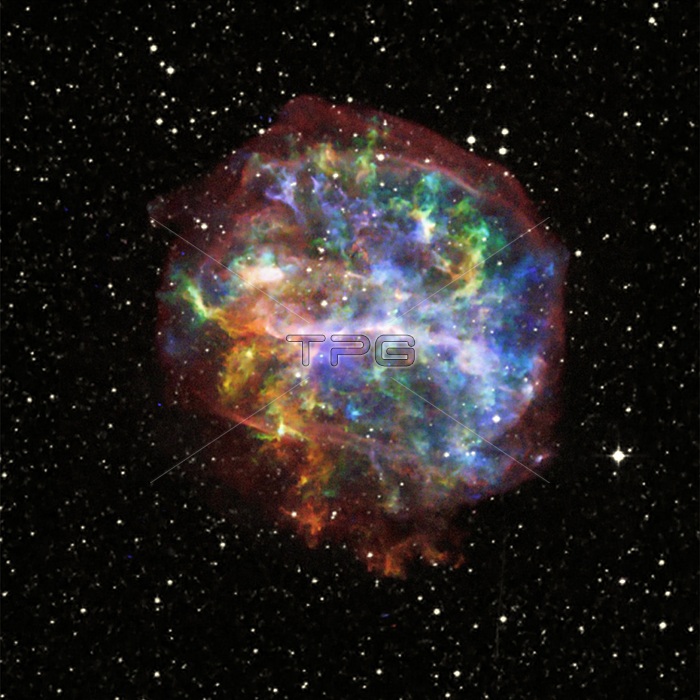
The aftermath of the death of a massive star is shown in this composite image of G292.0+1.8. Although considered a textbook case of a supernova remnant, the intricate structure shown here reveals a few surprises. Near the center of G292.0+1.8 is the so-called pulsar wind nebula, most easily seen in high energy X-rays. This is the magnetized bubble of high-energy particles that surrounds the pulsar, a rapidly rotating neutron star that remained behind after the original, massive star exploded. The narrow, jet-like feature running from north to south in the image is likely parallel to the spin axis of the pulsar. The pulsar is located slightly below and to the left of the center of G292.0+1.8. Assuming that the pulsar was born at the center of the remnant, it is thought that recoil from the lopsided explosion may have kicked the pulsar in this direction. However, the kick direction and the pulsar spin direction do not appear to be aligned, in contrast to apparent spin-kick alignments seen in some other supernova remnants.
| px | px | dpi | = | cm | x | cm | = | MB |
Details
Creative#:
TOP22309981
Source:
達志影像
Authorization Type:
RM
Release Information:
須由TPG 完整授權
Model Release:
N/A
Property Release:
No
Right to Privacy:
No
Same folder images:

 Loading
Loading